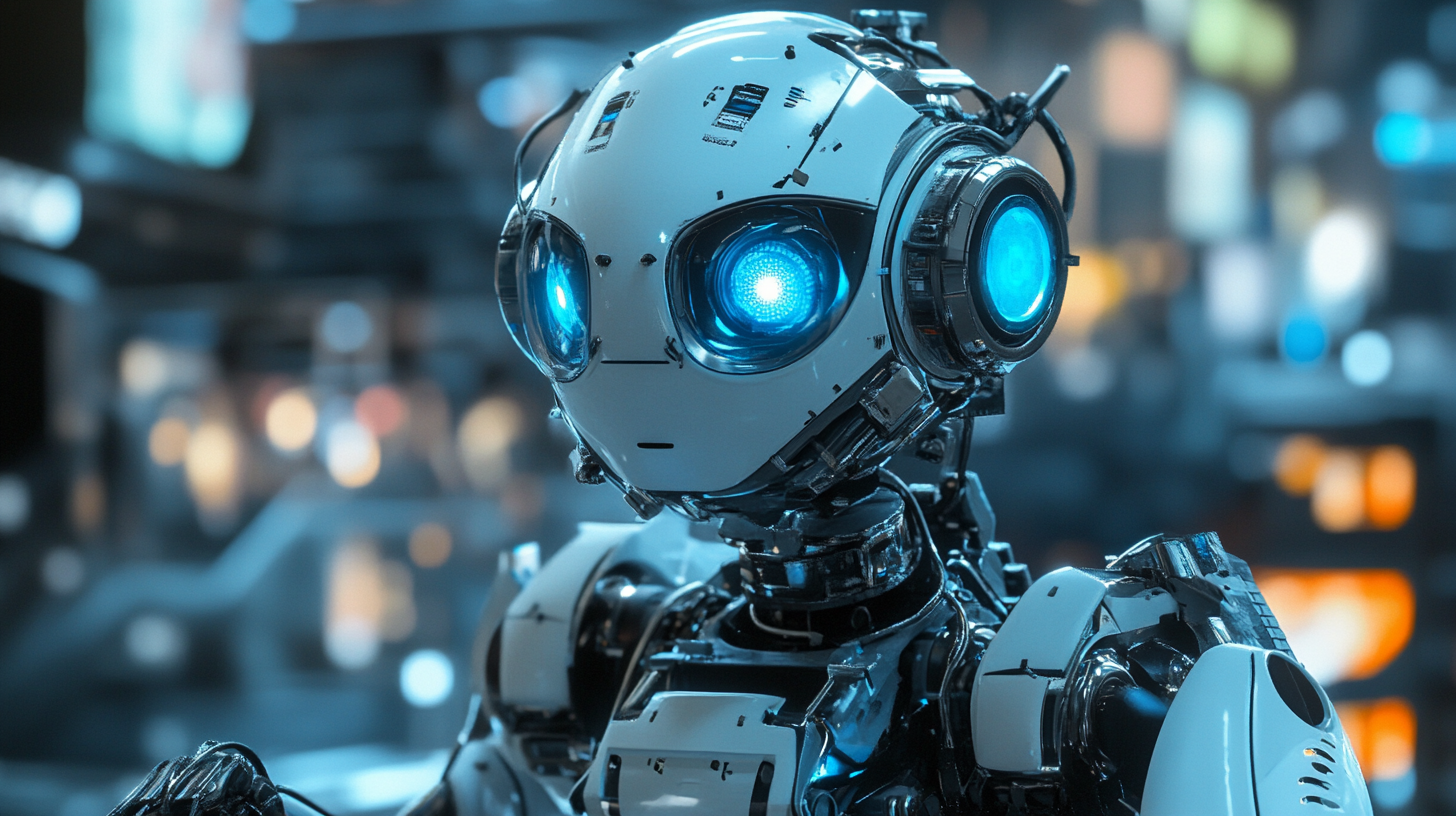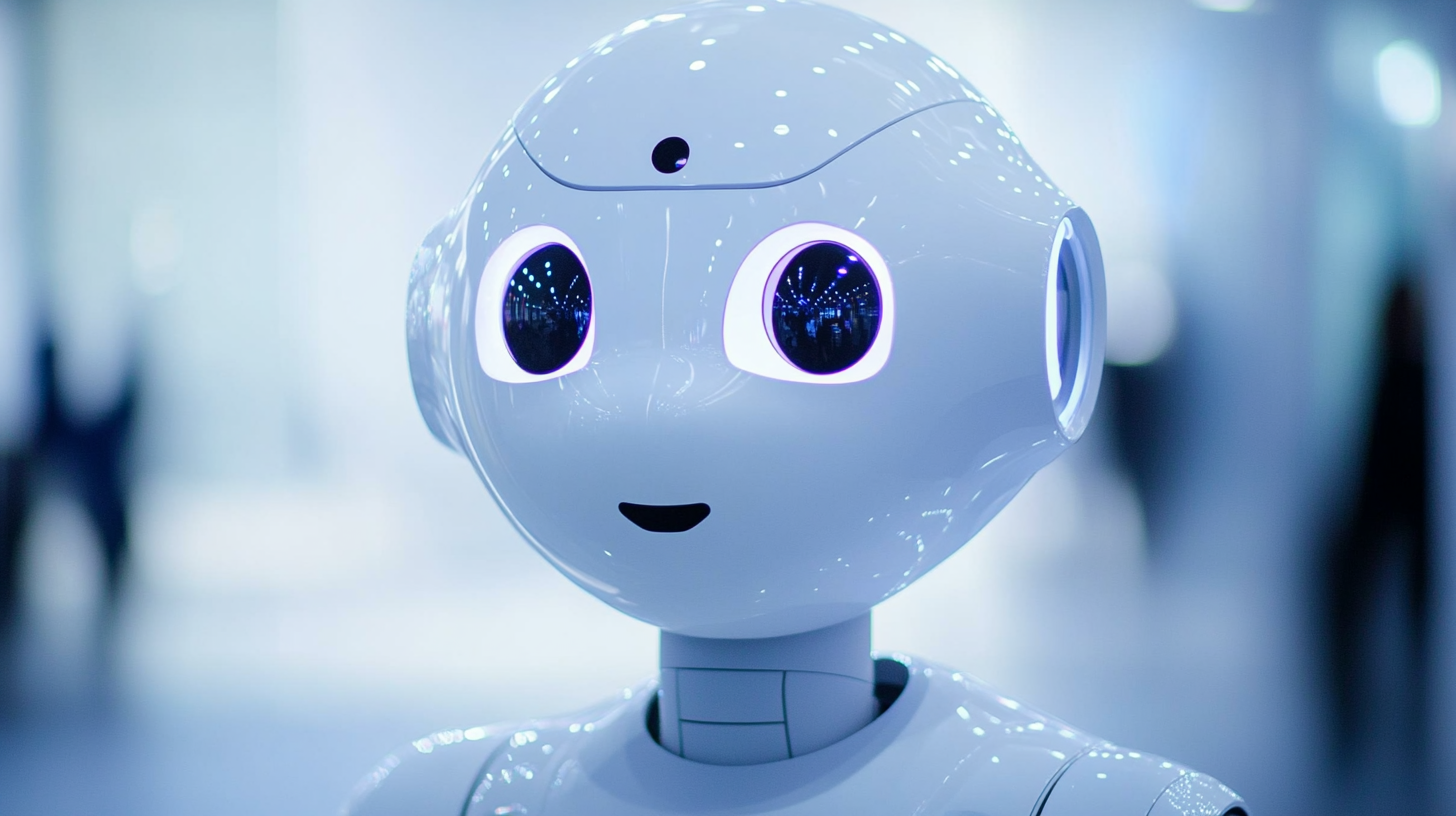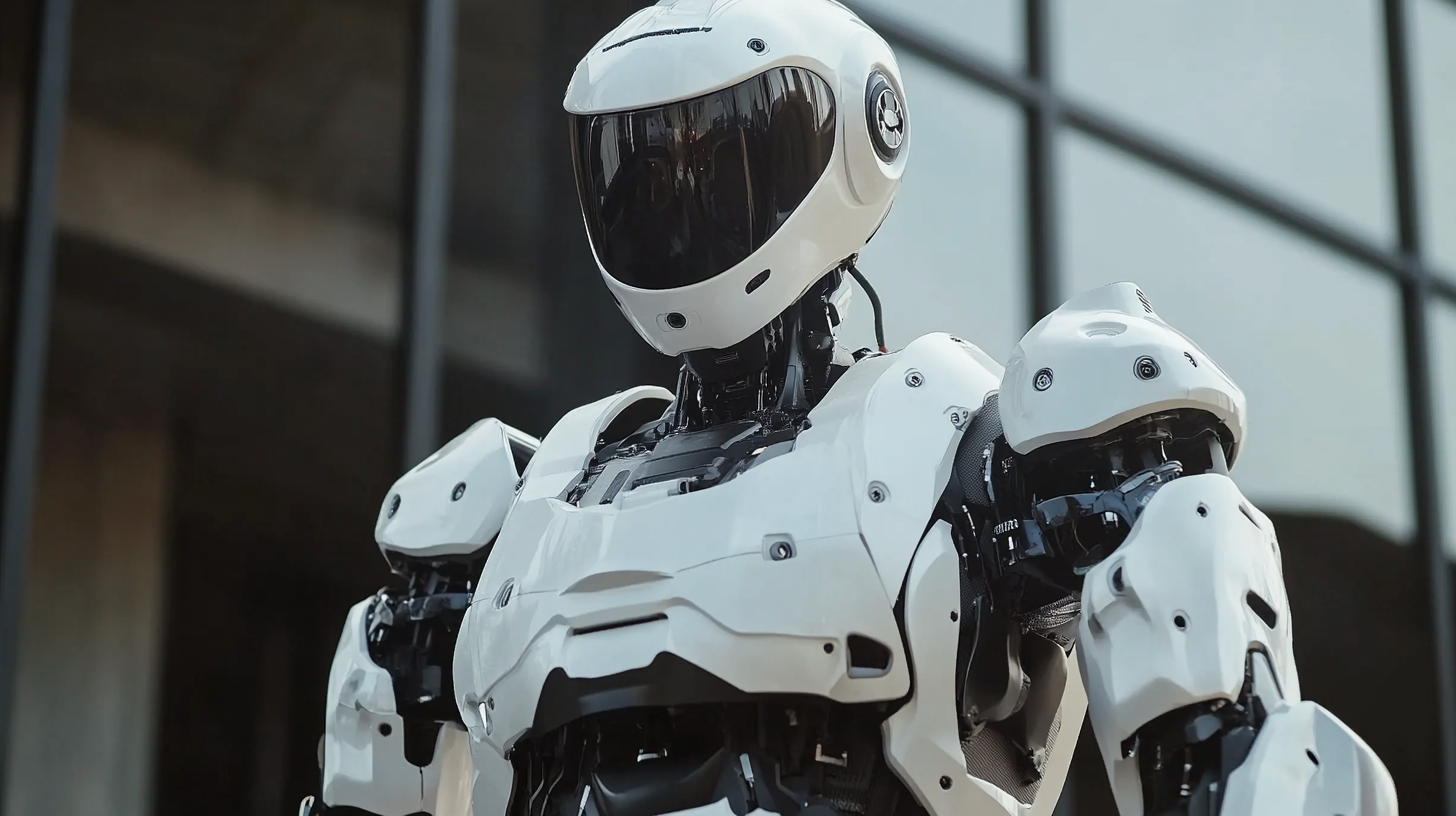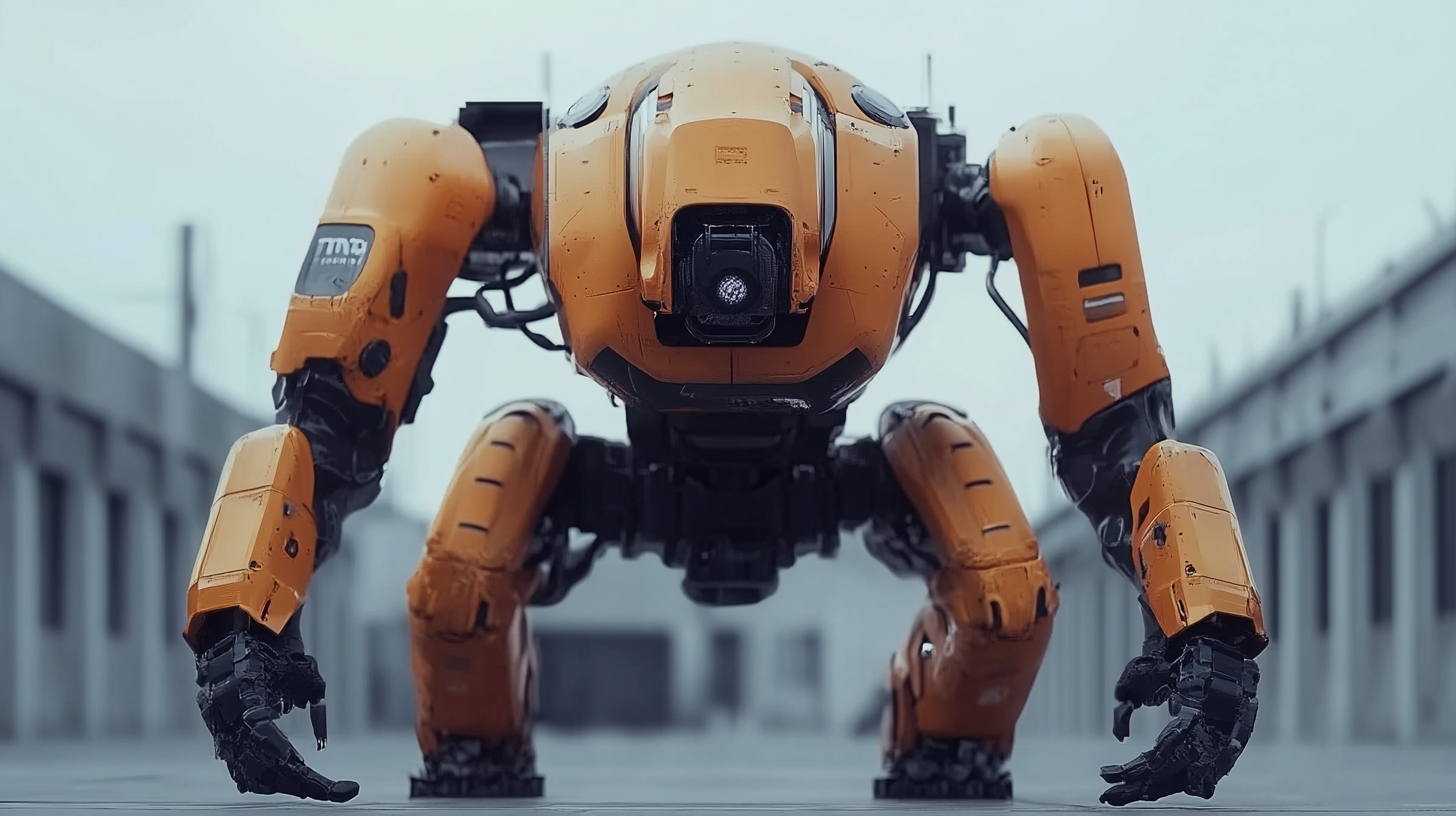Use it to plan your own robot barista payback period.

Want to know more details?
Please, contact your manager.
Aleksandr Maksimovich
Business Development Manager
Nalarobot Robotics | Nalarobot Café
Mobile: +375 333 760 460
(WhatsApp | Telegram | Viber)
BLOG
7 Game Changing Trends in Industrial Robotics for Global Buyers
The ever-changing nature of manufacturing at its heart has brought about industrial robotics as one of the most innovative fields in the world. The trend is pertinent to global buyers trying to position themselves on emerging trends on industrial productivity improvements and cost-reduction measures. And this blog looks into the seven important trends that shape industrial robotics and what they mean for the procurement strategy and investment decisions.
Its trend is far-reaching and includes many aspects of aptness rather than mere operations. There are all the collaborative robots that can work hand-in-hand with human employees, as well as intelligent robotics, which are primarily powered by artificial intelligence. It is all about effecting more valuable transformations on production processes. Buyer countries may of course be positioned to enjoy what is in store with **Industrial Robotics** by studying these important trends. Thus, as much as such countries may be keeping abreast with developments, they are also leading the charge toward a more automated and efficient future.

Emerging Technologies Revolutionizing Industrial Robotics
There is a paradigm shift gradually happening in industrial robotics with emerging technologies. Artificial Intelligence, Machine Learning, and Internet of Things (IoT) would not continue to supplement the old things but will tear down the walls of possessive capabilities defining the feats that robots can accomplish. Power of AI in robotics hence would inform complex assignments that robots can perform more accurately and autonomously, thereby increasing the efficiency and productivity of the factory floor. With the help of this technological evolution-they would make manufacturers more nimble, changing or modifying production requirements much faster. On the other hand, with the addition to AI-Collaborative Robotics-Cobot is literally on the rise nowadays in the industry. These are robots especially for the said purposes of working together with workers in industries towards safety and maximum productivity realization. This simply means that it is taken to do those jobs which can be repeated or are hazardous while the human side can focus on more complex and value-added activities. The combination of sensors and smart technologies has also improved the interaction in the human-robot relationship, making it easier for both to share workspaces and for synergistic work to happen. Furthermore, new generations of materials and processes for manufacturing are set to change the design and functions of robots in factories. Such materials would be lightweight and durable, thus leading toward popularly versatile robots that can function in different environments. Some innovations like 3D printing are paving the way for additional dimensions into the world of customizing robotic solutions for unique operational needs. As the forecast for growth in technology looks promising, future years are expected to bring more innovation and open new levels of outstanding operational excellence and competitive advantage in the global perspective of industrial buyers.

The Rise of Collaborative Robots and Their Impact on Manufacturing
A metamorphosis known as intelligent manufacturing is going on due to the introduction of collaborative robots, called cobots, used beside human operators. The report reflects the global collaborative robot market toward USD 1.1 billion in 2020 and further up to USD 3.3 billion by 2025, which is a CAGR of 25.3%. This is a strong element pointing to the fact that manufacturers now see the value cobots bring to production in terms of efficiency and safety.
Collaborative robots are equipped with modern operational and safety features, providing them the liberty to operate near human workers without the usual extensive safety barriers. This ability permits manufacturers to use cobots in many applications, from assembly to quality inspection. The International Federation of Robotics (IFR) stated that by 2022, approximately 3 million industrial robots were in operation around the world, with a significant proportion classified as collaborative. These robots not only alleviate the human workforce from tedious, repetitive tasks, but they also get human associates to remain productive for higher, more complex, and strategical tasks.
But as much as these companies are enjoying the benefits of a fast integration, they are also enjoying the possibility of a shorter training span, thus cutting down costs in operation, As much as the trends suggest, a study by Deloitte suggested that manufacturers employing collaborative robots reported a 20% increase in overall productivity. As companies are working to meet the demand for customized products and shorter lead times, the introduction of cobots in manufacturing would revolutionize their production processes into smaller and highly market-responsive ones.

Trends in AI Integration for Enhanced Robotic Performance
AI is changing the landscape of robotics in the industrial world. It is, however, transforming the architecture of processes in factories and even the general outcome performance. This recent assurance from current data revealing that manufacturers who run AI-driven robotics realize as much as a 30% increase in productivity attests to the benefits of technology. The AI algorithms can enable the robotic systems to learn from their environment, adapt to new tasks, and hone efficiency in real-time-the most critical aspect of manufacturing setups that run through fast-paced beats.
Perhaps one of the most progressive advancements is machine vision and predictive analytics, which make robots able to execute activities without human intervention to a significant extent. An example is that robots with these features would be able to improve accuracy in assembling more intricate components than a human counterpart by more than 50 percent in error reduction. Further, the application of AI in motion control systems is foreseen to further improve robot movements into more natural and accurate paths for applications requiring higher levels of dexterity.
In addition, the new simulation tools, revolutionizing robot training by providing synthetic data for learning improvements, promise to train robots faster for more diverse applications. It could also dramatically change the scene in the working environment since the potential for AI to affect teambuilding is very promising, as organizations adopting robotic AI into their teams normally report significant improvements in teamwork and morale.

The Shift Towards Sustainable Practices in Robotics Production
Industrial robotics is said to be under transformation because of the various sustainable practices that are now becoming necessary. With increasing awareness of the environmental effects of their activities, organisations now adopt eco-friendly manufacturing processes. Almost 75% of industrial stakeholders have echoed what was reported by McKinsey & Company that sustainability was a high priority and that green technologies would be used in investments in practice.
In 2022, the global sustainable robotics technologies market was assessed at around $30 billion and predicted to grow by 12% compound annual increase over five years, as reported in research by MarketsandMarkets. Changes that drove most of that growth included the development of energy-saving automation solutions and recyclable materials for robotic components. Today, the largest manufacturers are turning to bioplastics and light alloys for carbon footprint-reducing production methods.
The introduction of energy-efficient robots minimizes waste while enhancing production levels. According to the International Federation of Robotics (IFR), artificial intelligence-empowered automation has reduced energy consumption by 20% in different sectors. Such changes in production are not only driven by regulatory requirements but by the consumers' inclination towards responsible production, making it suitable for the global buyer to adopt these trends in procurement strategies.
Market Dynamics and Global Trends Shaping Robotics Investments
The landscape of industrial robotics is rapidly changing, driven by market dynamics and global trends that shape investment in this sector. A recent report by ABI Research concludes that the global industrial robotics market will surpass $50 billion in 2025 at a growth rate of over 12% CAGR from 2020. Growth is stimulated by increasing AI developments that enhance machine learning capacities and allow robotics to perform increasing complex tasks.
Increased automation in many industries due to labor shortages and the costs of labor is another recent trend with seismic implications for the industry. In its latest report, IFR confirmed a record number of industrial robots sold in 2020, with over 384,000 units. With this record surge in sales comes a realization by manufacturers that productivity gains and streamlined operations would best be met by deploying robots. As further investment in robots for the optimization of supply chains becomes appealing, it seems that not just large enterprises but also small- and medium-sized companies willing to stay ahead of competition will be interested.
Moreover, the incorporation of robotics with the Internet of Things (IoT) and big data analytics allows for the production environment to become smarter. According to a Deloitte report, organizations incorporating advanced robotics along with data-intensive analytics are capable of achieving operational efficiencies of about 30%. This amalgamation reduces costs and enables manufacturers to implement predictive maintenance and real-time decision-making methodologies in response to disruptions, thus creating more resilient manufacturing frameworks. As these trends continue to evolve, industrial robotics has positioned global buyers to take advantage of this transformational technology.
